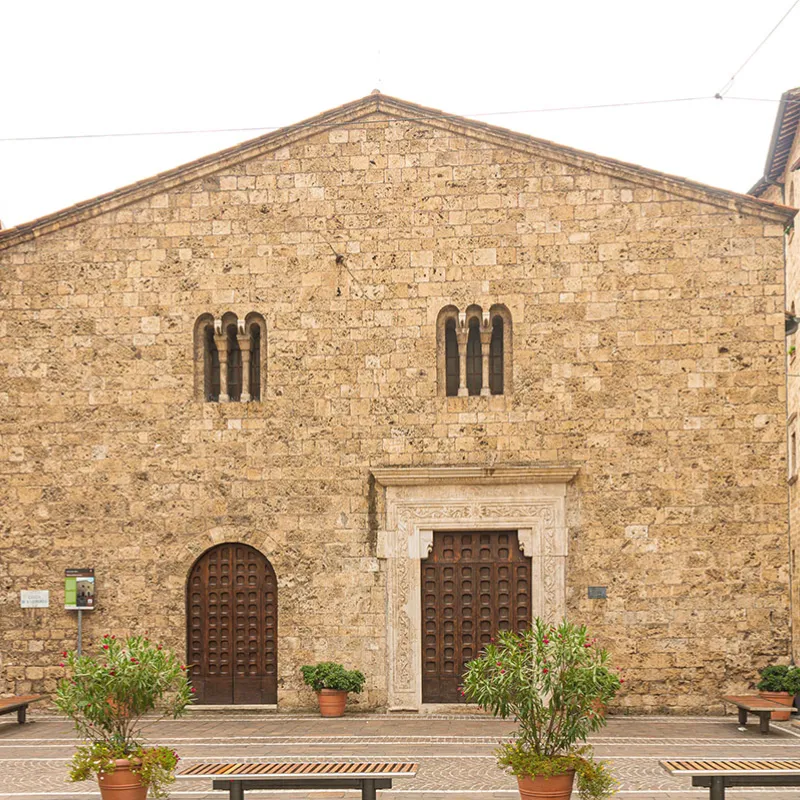The architectural heritage of Cesare Bazzani
A journey into the neoclassical charm of Terni, where the architecture of Cesare Bazzani blends with history and culture, providing an unforgettable experience.

This fascinating city hosts an impressive collection of neoclassical buildings that redefined its urban landscape in the early decades of the 20th century. The mastermind behind this architectural treasure is Cesare Bazzani (1873-1939), a genius who left Terni a heritage inspired by the revival of classicism, enriched with touches of the new artistic trends of the time.
To immerse yourself in Bazzani's works, you can follow a fascinating itinerary that will take you through the city centre and beyond, to the evocative Marmore Waterfalls, where the Galleto Hydroelectric Power Plant, designed by the architect in the late 1920s and still in operation, is located.
The starting point is the former Palazzo delle Poste in San Giovanni Decollato Square, now converted into an events venue that blends tradition and modernity.
One of Bazzani's most interesting and original gems can be found along Corso Tacito: the elegant Palazzina Alterocca. This 1901 building, situated along the city's main thoroughfare, combines classical elements with Art Nouveau details, such as elegant stained glass windows and floral decorations. In the past, it housed the business activities of Virgilio Alterocca, one of the Italian pioneers in the production of picture postcards. This historic building was also the home of the Alterocca family and hosted the facilities of the city's first telephone network, as can be seen by the turret above the building.
Continuing along Corso Tacito, one comes across the Palazzo della Previdenza Sociale.
Bazzani’s most imposing construction in Terni, whose proportions responded to the institutional function for which it was intended, is Palazzo della Provincia in Tacito Square. Neoclassical in form, with pilasters surmounted by capitals and a façade overlooking Viale della Stazione.
To emphasize the solemnity and importance of this new institution, the Province of Terni, Bazzani created an elevated structure, almost a tower, characterized by large arches.
A short distance away, in Largo Don Minzoni, is Villa Bazzani, the architect’s own charming residence. Although it follows the predominant style of the other buildings, Villa Bazzani features numerous Art Nouveau decorations, providing a unique touch of elegance.
Moving away from the centre, along Viale Benedetto Brin, you will find another magnificent work by the illustrious architect: the Professional Institute for Industry and Craftsmanship. Built in the early 20th century, the institute aimed to provide technical training to meet the needs of the rapidly developing industries in Terni. An ambitious project that saw the participation of important local entrepreneurs.
Finally, do not forget to visit the church of Sant'Antonio, a masterpiece by Bazzani, as well as his engaging restoration project for the church of San Lorenzo. These places of worship are permeated with timeless beauty that will leave you breathless.
THE STAGES OF THE ITINERARY

The area of the former Post Office building on the main square of Terni, Piazza della Repubblica, was once the location of the church of San Giovanni Decollato.

Virgilio Alterocca, a name known world-wide for his postcards, was a courageous as well as enlightened entrepreneur, committed to the success of the city of Terni.

Cesare Bazzani designed the Government Building (1930) overlooking Viale della Stazione.

The design of the new church, the first built in modern times in Terni, was assigned to the architect Cesare Bazzani and work began in 1924 and was completed in 1935.

The church, one of the oldest parish churches in the city, was built in the Romanesque period and has been enlarged and restored several times over the following centuries and mostly rebuilt after heavy bombing during World War II.

The Marmore Waterfall is created by the River Velino dropping down into the Nera River below, with a drop of 165 metres